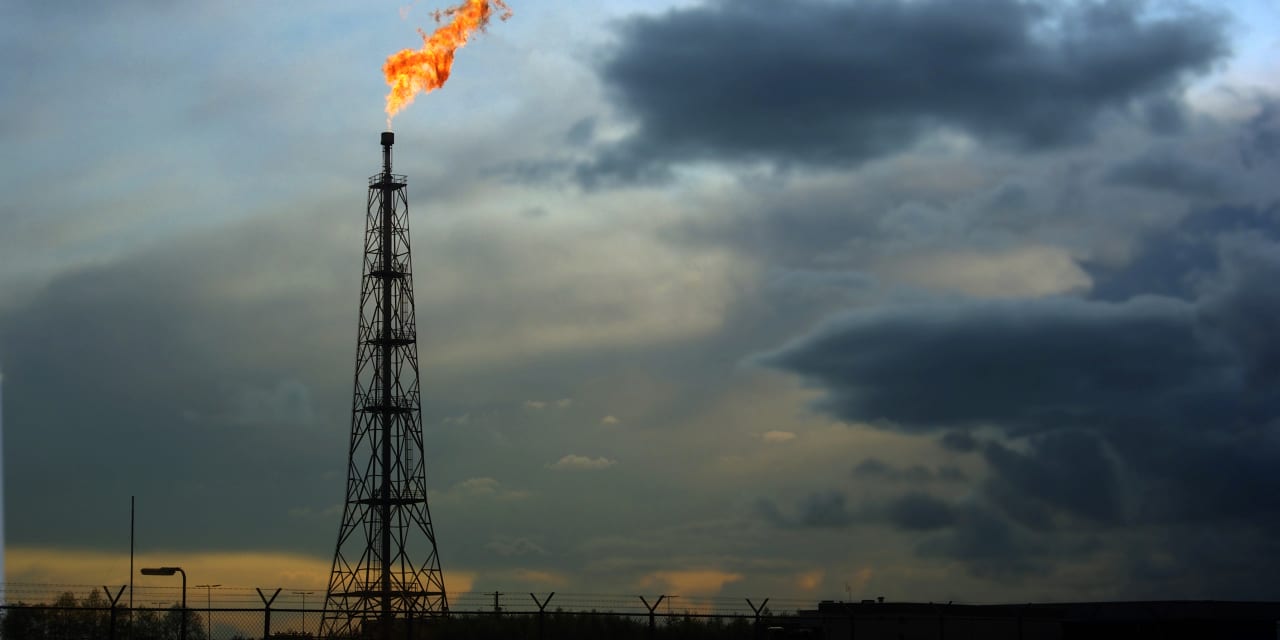On the one hand, the
United States Natural Gas Fund,
an ETF tracking natural gas prices, looks like a classic value investment.
It has fallen 27% this year, despite the fact natural gas is becoming a more important energy source around the world. Futures contracts expiring a year from now trade for more than twice as much as contracts expiring next month, a sign most people expect prices to rebound dramatically.
On the other hand, the UNG fund can be a risky vehicle. It could still fall more and cost novice investors a lot of money, some trading experts said. With natural gas prices in the midst of an historic rout, it might make sense to steer clear.
Natural gas prices have fallen dramatically because it has been a warm winter in much of the world and natural gas production has stayed strong, leading to an oversupply.
Natural gas is used for heating, among other things, and demand tends to be much higher in winter than in summer. When natural gas goes unused, it ends up getting pumped into storage tanks. As of last week, there was 16% more natural gas in storage than there usually is this time of year, according to the Energy Information Administration.
This part of the year—when traders shift from winter futures contracts to summer ones—can be one of the trickier moments to navigate.
In fact, the transition period between the March and April natural gas futures contract is known as “the widow-maker” because traders have lost enormous sums of money on it before, according to Robert Yawger, director of energy futures at Mizuho Securities.
Complicating things even more, the March and April contracts have been trading in an illogical pattern, Yawger noted.
Natural gas being delivered in March, a month where heating demand is normally still strong, is selling for less money than natural gas being delivered in April, a month where heating demand is generally lower. (It’s almost like ice cream selling for higher prices in December than in July.)
“It can go against logic,” he said. “There’s no way the first month on the summer strip should ever trade at a premium to the last month on the winter strip, but it happens.”
One challenge with the UNG fund is that it holds futures contracts that need to be rolled over to the following month before they expire. Natural gas is trading in what is known as a contango pattern, meaning the price of gas in future months is more expensive than gas being delivered today. So the fund essentially has to sell a cheaper contract to buy a pricier one.
UNG has been a “disaster investment” for anyone who has bought and held, wrote Rick Bensignor, founder of Bensignor Investment Strategies, in an email to Barron’s.
“Not only because the price of natgas has collapsed—but because the monthly futures roll in a contango market always means that the fund’s portfolio manager is selling out of a contract and replacing it with a higher-priced futures contract,” Bensignor wrote.
Investors need to understand that, Bensignor added. “You’d need a really long-standing rally to make up that roll cost just to get even. And then there’s over a 1% management fee on top of it to recoup, too.”
The risk of contango is discussed extensively in UNG’s prospectus, notes John Love, president and CEO of USCF Investments, the asset manager behind UNG.
USCF offers another fund, the
United States 12 Month Natural Gas Fund LP
(UNL), that is designed to mitigate the effect of contango. In an email, Love noted UNL can sometimes underperform UNG when natural gas rebounds.
“Even in contango environments, UNG can outperform UNL over the short-term when natural gas prices rise rapidly. (Contracts at the front of the curve tend to have the most volatility.),” Love wrote.
UNG is also much more popular. As of Thursday, it held $738 million in assets, versus $13 million for UNL.
The UNG fund is known for relatively high volatility compared to other commodity funds, Yawger said. Expert traders enjoy volatility, but it can turn the stomachs of novices.
“With the all-time low in front-month futures just north of $1, it could still fall almost 40% to test that level,” wrote Bensignor. “Sure you could buy natgas because it’s relatively ‘cheap’. Would I, with my own money? Nope.”
Write to Avi Salzman at [email protected]
Read the full article here




